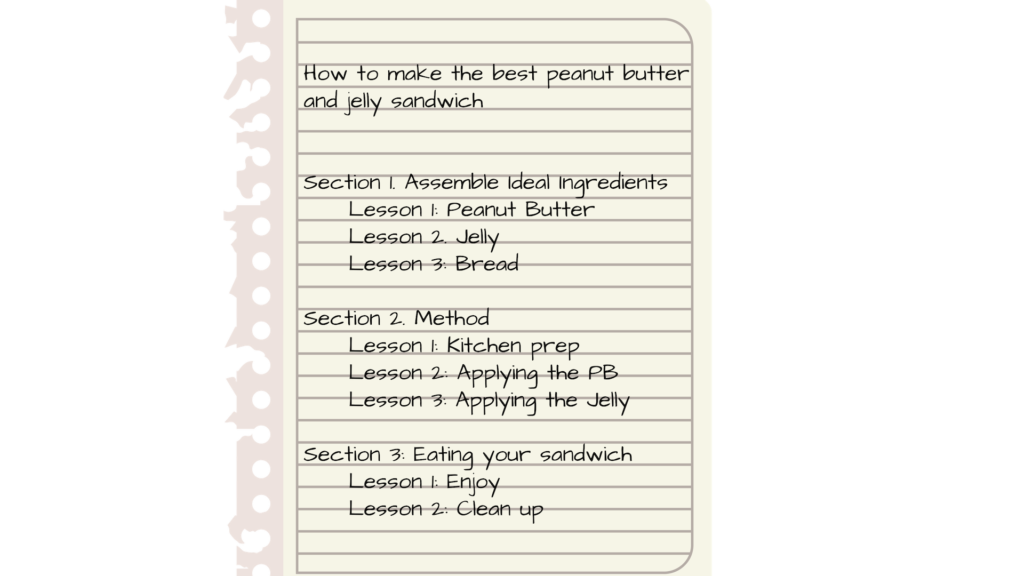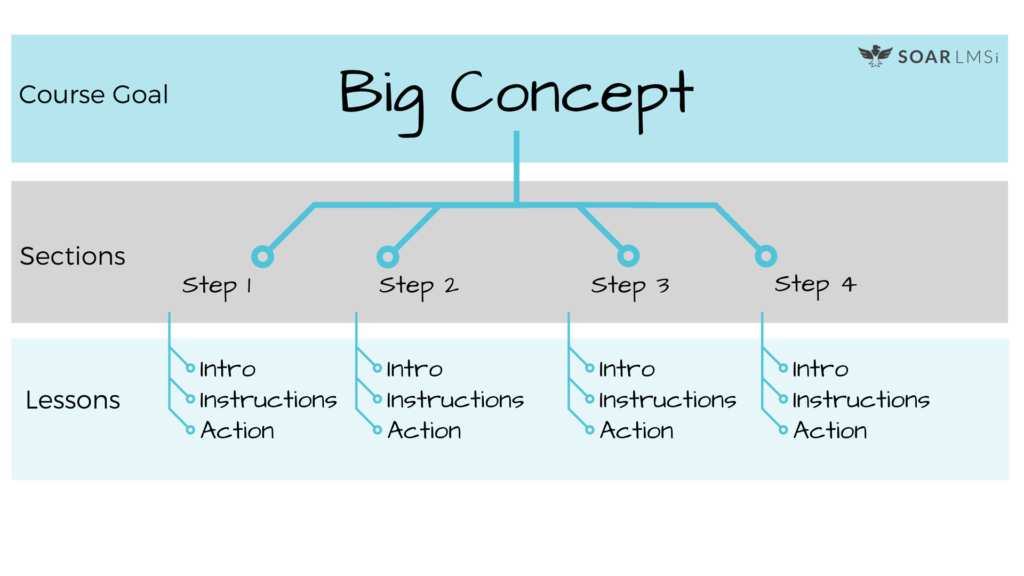Creating a Successful Online Course: Writing a Strong Outline

Outlining Your Course for Student Success
It’s time to get down to the nitty gritty of building your course.
Once you refine your course idea to a specific topic, you can begin to assemble your course content. You’ll have lots of great things floating around in your brain, so get them on paper into an outline! As a result, you’ll build a stronger course many students want to take and stay engaged with.
Foundation for Creating an Outline
- Define your end goals. Remember the problem you are solving for your ideal student keep this in mind as you create the flow of your course content.
- Brainstorm and write down what you want to cover in your course. In light of your end goals, what are the specific steps a student will need to take to achieve these goals?
- Divide your ideas into the specific steps, we can call these “sections” and then smaller “lessons” that break down each section. Structure these in a way that flows smoothly and builds upon the previous step.

Writing your course outline
Make your outline headings sections and subheadings lessons. A section is a culmination of lessons. Lessons are the individual videos, screencasts, text, and audio that make up your course. At the end of a section, your student should have an action item and know that they have completed a major step toward the end goal. For each section, you can follow this mini outline:
- What I am going to teach you (lesson 1, an intro/overview)
- Why you should know this (lesson 2, pay close attention, here’s why you care, how it fits into the bigger goal)
- How to do that thing (as many lessons as needed to get them to complete the step)
- Conclusion (A recap and an action item)
Got your outline? Move on to writing your content
Take your completed outline and begin to write out the lessons you want to teach, either word-for-word or in bullet points.
You can use slides to guide script. Write out bullet points on the slides. If you want to script the whole talk, do that in another document or the notes area of your presentation program.
*Get all our outlining and content creating tips in our free 57-page guide!
Writing like an instructor
If you haven’t already, you’ll need to start thinking like an instructor. Turning your expertise into a course will be a switch in your approach and possibly the language you use. Here are a few instructor tips to create a course students will stay engaged in, be sure to create your scripts and flow with them in mind.
- Lead students from point a to point b and remind them what they will achieve by being in your course.
Students want to see a change in their lives. They want to develop a new skill, gain knowledge—it’s why they signed up for the course. Remember your desired outcomes and check if everything you are doing puts students on that trajectory.
- Share results early.
Structure your class in a way that students can see results from the beginning. These don’t have to be massive things. However, getting some early “wins” will help them feel like they are learning and that your course is working.
- Highlight student progress.
In your lessons, highlight how far your students have come. Reference some of the early lessons and congratulate them on what they have learned.
- Set clear expectations.
It is better to undersell and overdeliver than the other way around. As you meet expectations, they will see their progress and feel encouraged to continue.
- Keep students active.
Give your students actual things they can implement as they go (the action item).
- Keep lessons on the short side.
Break down concepts to keep individual lessons short. If you are over 15 minutes on an individual lesson, make it two lessons.
Aim to make videos 4-8 minutes long. The longer you go, the more likely you are to lose their attention. Four 5-minute videos are generally better than one 20-minute video. If your topic necessitates a longer lesson sometimes, keep students engaged and alert them the lesson will be longer.
- Make awesome titles.
Just like we talked about for your course title, be specific in titling your lessons. Help students know what to expect, and be excited to continue learning. Use interesting titles that point towards impactful learning outcomes.
Take Action Today!
First of all, be very excited that you are now putting your ideas into written form that will impact the lives of your students!
Work through your topic “brainstorm” and refine it into an outline that will take students on a journey to their desired end!
Creating is easy! Start your free trial and see for yourself!



